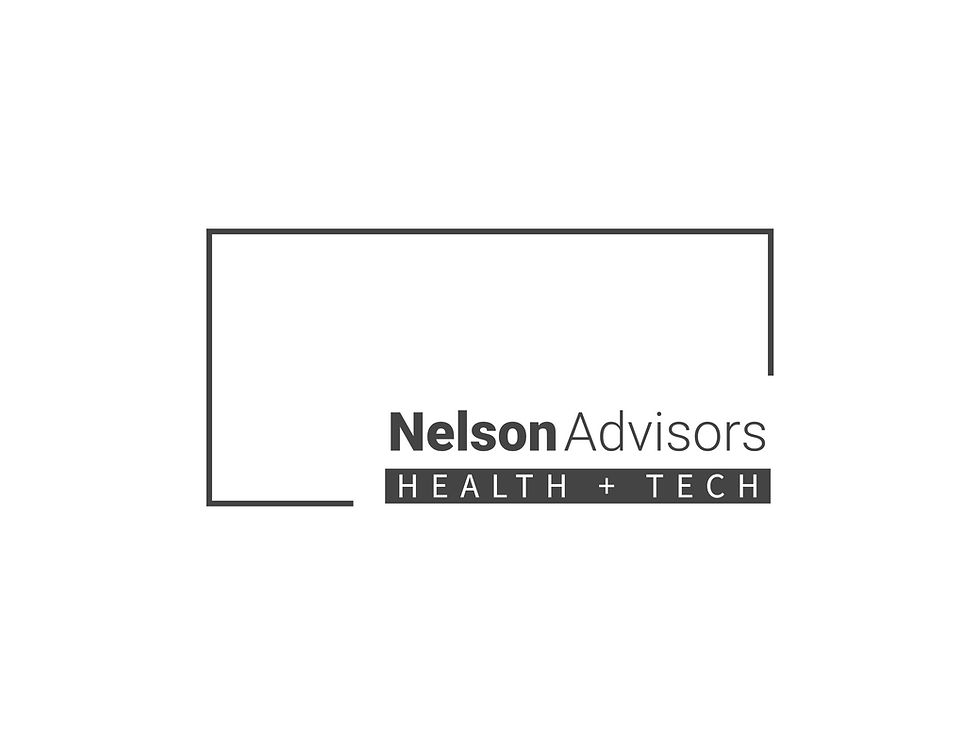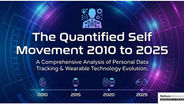Continuous Glucose Monitoring: CGM HealthTech sub market matures in 2025 with more impact and evidence
- Lloyd Price
- May 9
- 5 min read
Updated: May 12

Continuous Glucose Monitoring - where is the evidence for CGM?
The continuous glucose monitoring (CGM) healthtech submarket is driven by a combination of clinical evidence, market growth data, and technological advancements, primarily for diabetes management but increasingly for broader health applications.
Below is a breakdown of the evidence supporting the CGM market, drawn from clinical studies, market analyses and emerging trends.
1. Clinical Evidence for CGM in Diabetes Management
CGM devices provide real-time glucose readings, improving glycemic control compared to traditional self-monitoring blood glucose (SMBG) methods. Key evidence includes:
Improved Glycemic Control: Studies demonstrate CGM reduces HbA1c levels (a marker of long-term glucose control) and time spent in hypoglycemia. For example, a 2019 international consensus on CGM metrics highlighted correlations between time in target glucose range (70–180 mg/dL) and reduced diabetes complications, such as retinopathy and nephropathy.
Reduced Hypoglycemia: CGM systems with alerts for low or high glucose levels help prevent severe hypoglycemic events, particularly in type 1 diabetes (T1D) and insulin-treated type 2 diabetes (T2D). Clinical trials show CGM users experience fewer hypoglycemic events compared to SMBG users.
Integration with Insulin Delivery: CGM is critical for automated insulin delivery systems (e.g., hybrid closed-loop systems), which adjust insulin based on real-time glucose data. These systems have shown superior outcomes in T1D management, with evidence suggesting progress toward fully closed-loop "artificial pancreas" solutions.
Adoption in Specific Populations: CGM is increasingly used in gestational diabetes and T2D, with studies showing better outcomes in HbA1c without increased hypoglycemia risk in these groups. For example, Abbott’s FreeStyle Libre has been approved for pregnant women with diabetes.
Most high-quality evidence focuses on T1D and insulin-treated T2D. Evidence for CGM in non-insulin-treated T2D or non-diabetic populations is less robust, with studies often small-scale or industry-funded, raising concerns about bias.
2. Market Growth and Economic Evidence
The CGM market is experiencing rapid expansion, driven by rising diabetes prevalence, technological innovation, and favourable reimbursement policies. Key data points include:
Market Size and Projections:
The global CGM market was valued at USD $4.6 billion in 2023 and is projected to grow at a CAGR of 7.19% through 2030.
Another estimate suggests the CGM market could reach USD $16.8 billion by 2033 (CAGR 11.9%) or even USD 55 billion by 2035 (CAGR 15.7%).
The broader blood glucose monitoring market, including CGM, is expected to hit USD $27.61 billion by 2032 (CAGR 8.29%).
Drivers of Growth:
Rising Diabetes Prevalence: The International Diabetes Federation estimates 643 million people will have diabetes by 2030, with obesity and aging populations as key contributors.
Reimbursement Expansion: Policies like Medicare’s 2023 expansion of CGM coverage for insulin-using patients in the U.S. have boosted adoption. In England, 97% of T1D patients have access to CGM through the NHS.
Technological Advancements: Innovations such as smaller sensors, longer wear times (e.g., 14-day sensors like Abbott’s FreeStyle Libre), and smartphone integration enhance user convenience and compliance.
Regional Insights:
North America dominates due to advanced healthcare infrastructure and high diabetes prevalence.
Asia-Pacific is the fastest-growing region, driven by rising diabetes awareness, healthcare investments, and large populations in China and India.
Market projections vary widely, reflecting uncertainty in adoption rates and regulatory changes. High costs (up to $300/month for non-diabetics) and limited reimbursement in low- and middle-income countries may constrain growth.
3. Technological Innovation and Industry Activity
The CGM market is characterized by high innovation, with companies like Dexcom, Abbott, Medtronic, and Senseonics leading R&D efforts. Evidence of technological progress includes:
Improved Accuracy and Convenience: Modern CGMs offer better sensor accuracy, reduced calibration needs, and real-time data sharing with healthcare providers. For example, Dexcom’s G7, cleared by the FDA in 2022, integrates with insulin pumps and supports pregnant women.
Non-Invasive Trends: Emerging non-invasive CGM devices (e.g., GlucoRx’s multi-sensor system) and wearables like the K’Watch aim to reduce invasiveness, though most are still in clinical trials.
AI and Predictive Analytics: Integration of AI and machine learning enhances predictive capabilities, enabling proactive diabetes management.
Over-the-Counter Availability: The FDA’s 2024 approval of the first OTC CGM (Dexcom Stelo) for non-insulin users expands access to non-diabetics, potentially broadening the market.
While innovation drives market enthusiasm, regulatory hurdles and high R&D costs create barriers for new entrants. Non-invasive technologies remain largely unproven in real-world settings, and their commercialisation timeline is uncertain.
4. Emerging Use in Non-Diabetic Populations
CGM use among people not living with diabetes (PNLD) is growing, driven by wellness trends and claims of benefits like diet personalization and metabolic health optimization. However, evidence here is limited:
Potential Benefits: Small studies and anecdotal reports suggest CGM can help PNLD identify glucose spikes from diet or lifestyle, potentially improving energy, sleep, or mood. A University of Tokyo study indicated CGM may detect early diabetes risk more accurately than blood tests in healthy adults.
Skepticism and Risks: A 2025 narrative review found “no consistent high-quality evidence” supporting CGM in PNLD, citing risks of maladaptive dietary changes (e.g., avoiding healthy foods like whole grains due to glucose spikes). Marketing claims often outpace evidence, raising concerns about misinformation.
Prevalence of Abnormal Glucose: A study of over 5,000 “healthy” adults where 43% showed pre-diabetes or diabetes-level glucose via CGM, suggesting potential for early detection but lacking peer-reviewed confirmation.
The PNLD market is speculative, with commercial interests potentially inflating benefits. Regulatory oversight is inadequate for off-label use, and psychological impacts (e.g., fixation on glucose levels) are understudied.
5. Challenges and Gaps in Evidence
Despite strong evidence for CGM in diabetes, several gaps and challenges persist:
Cost and Access: High costs and limited reimbursement in low- and middle-income countries restrict access. Even in high-income regions, CGM is not universally covered for non-insulin users.
Regulatory Barriers: Stringent FDA and EMA requirements ensure safety but delay market entry for new devices.
Data Standardisation: Lack of standardised CGM metrics and reporting hinders clinical adoption and interoperability.
Long-Term Outcomes: Most studies focus on short-term metrics (e.g., HbA1c, time- Long-Term Outcomes: Long-term trials linking CGM metrics to complications like retinopathy are suggestive but not definitive, limiting claims of preventing chronic issues.
Non-Diabetic Use: Evidence for CGM in PNLD is weak, with commercial claims potentially misleading.
Psychological Impact: Excessive monitoring may lead to anxiety or disordered eating, especially in PNLD, but this is under-researched.
The CGM healthtech submarket is well-supported by evidence for diabetes management, particularly for T1D and insulin-treated T2D, with robust clinical data showing improved glycemic control, reduced hypoglycemia, and integration with insulin delivery systems. Market growth is strong, driven by rising diabetes prevalence, reimbursement expansion, and technological advancements, with projections estimating significant revenue increases by 2030–2035. However, evidence for non-diabetic use is sparse and controversial, with risks of misinformation and psychological harm. While CGM is a transformative tool for diabetes, its broader application requires more rigorous research to validate claims and address access disparities.
Nelson Advisors > Healthcare Technology M&A
Nelson Advisors specialise in mergers, acquisitions and partnerships for Digital Health, HealthTech, Health IT, Consumer HealthTech, Healthcare Cybersecurity, Healthcare AI companies based in the UK, Europe and North America. www.nelsonadvisors.co.uk
Nelson Advisors regularly publish Healthcare Technology thought leadership articles covering market insights, trends, analysis & predictions @ https://www.healthcare.digital
We share our views on the latest Healthcare Technology mergers, acquisitions and partnerships with insights, analysis and predictions in our LinkedIn Newsletter every week, subscribe today! https://lnkd.in/e5hTp_xb
Founders for Founders > We pride ourselves on our DNA as ‘HealthTech entrepreneurs advising HealthTech entrepreneurs.’ Nelson Advisors partner with entrepreneurs, boards and investors to maximise shareholder value and investment returns. www.nelsonadvisors.co.uk
#NelsonAdvisors #HealthTech #DigitalHealth #HealthIT #Cybersecurity #HealthcareAI #ConsumerHealthTech #Mergers #Acquisitions #Partnerships #Growth #Strategy #NHS #UK #Europe #USA #VentureCapital #PrivateEquity #Founders #BuySide #SellSide
Nelson Advisors LLP
Hale House, 76-78 Portland Place, Marylebone, London, W1B 1NT
Contact Us
Meet Us
Digital Health Rewired > 18-19th March 2025
NHS ConfedExpo > 11-12th June 2025
HLTH Europe > 16-19th June 2025
HIMSS AI in Healthcare > 10-11th July 2025




















































Comments